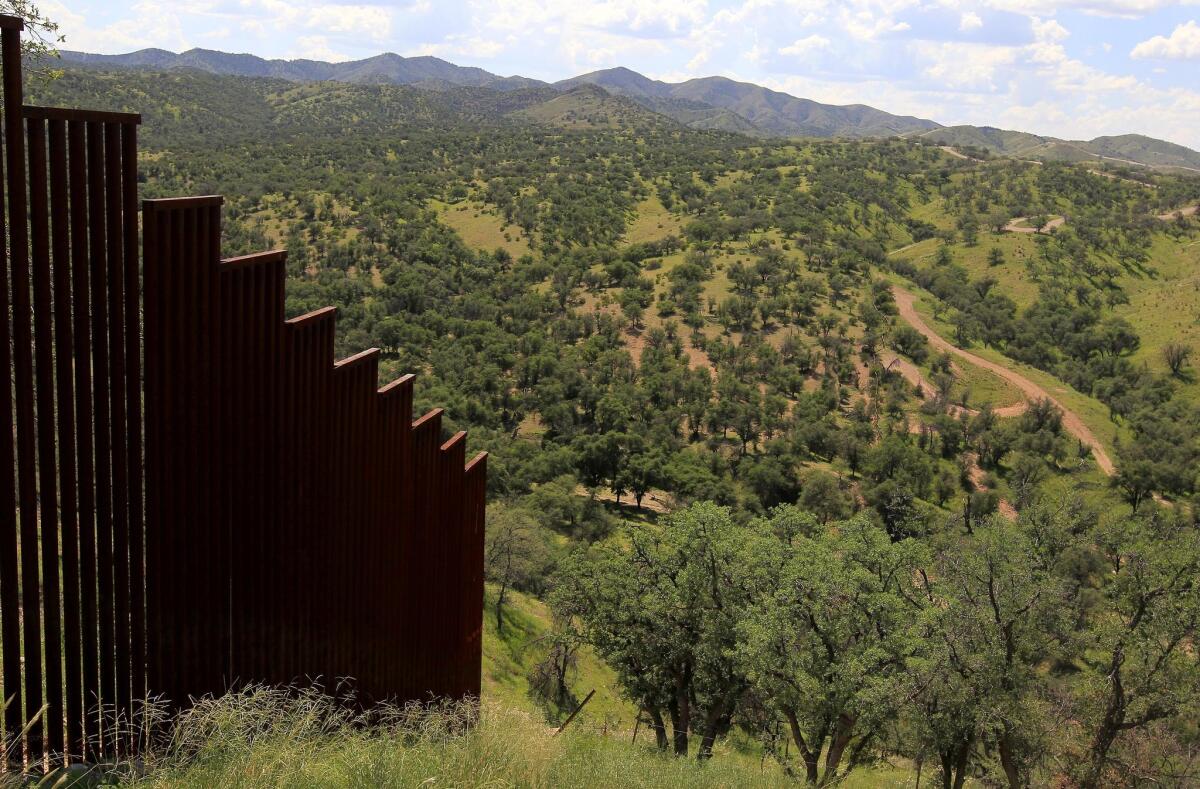Editorial: Customs and Border Protection’s deadly force problem

- Share via
The new head of U.S. Customs and Border Protection’s internal affairs office made a troubling assertion late last week. Since 2004, he said, the agency has apparently taken no disciplinary action against any of its agents who have used deadly force. That follows a report released in February by the nonprofit Police Executive Research Forum, which reviewed 67 shooting incidents by Border Patrol agents from January 2010 to October 2012, 19 of which were fatal, and accused the agency of violating accepted police practices and a “lack of diligence” in investigating agents’ actions.
The American Immigration Council reported in May that of 809 abuse complaints (a broader category) filed from 2009 to 2012, 40% remained unresolved, and in the resolved cases, only 3% found fault with an agent’s actions. Comparative statistics are hard to come by, but a study of 2002 data found that about 8% of complaints against civilian police officers were sustained.
The backlog of cases and the possibility that the agency has been unwilling to discipline its officers led Department of Homeland Security officials in June to replace the internal affairs director, James F. Tomsheck, with an outsider, former L.A. police officer and FBI Deputy Assistant Director Mark Morgan. It was Morgan who told reporters he had yet to find records of disciplinary actions against agents in deadly force cases. While it’s possible that there was no fault to be found, that seems highly unlikely.
It is clear that the agency must respond more quickly to complaints and must be willing to assess the behavior of its employees fairly and objectively when they use their weapons. In one 2012 case, a Border Patrol agent fired across the border into Nogales, Mexico, killing 16-year-old Jose Antonio Elena Rodriguez; the boy, who the Border Patrol says may have been throwing rocks, was struck in the back by at least eight bullets. His family says he was merely walking home after playing basketball. The American Civil Liberties Union has filed a wrongful death suit on behalf of the family, but so far it has been unsuccessful in getting the agency to publicly identify the officer involved.
Customs and Border Protection officials have been making some progress. After the report criticizing the agency for “lack of diligence,” agents were ordered to avoid some of their more dangerous and provocative tactics, including responding to rock throwing with gunfire and standing in front of moving cars and opening fire if the driver continued forward. Bringing in Morgan, who told reporters that he has “no legacy mind-set,” also seems to have been a positive step. He is reviewing cases and so far has flagged 14 shootings for closer scrutiny.
Morgan’s findings must not be shrouded in secrecy, which has been the agency’s norm. These are public employees doing the public’s work. The default position should be transparency.
Follow the Opinion section on Twitter @latimesopinion
More to Read
A cure for the common opinion
Get thought-provoking perspectives with our weekly newsletter.
You may occasionally receive promotional content from the Los Angeles Times.










